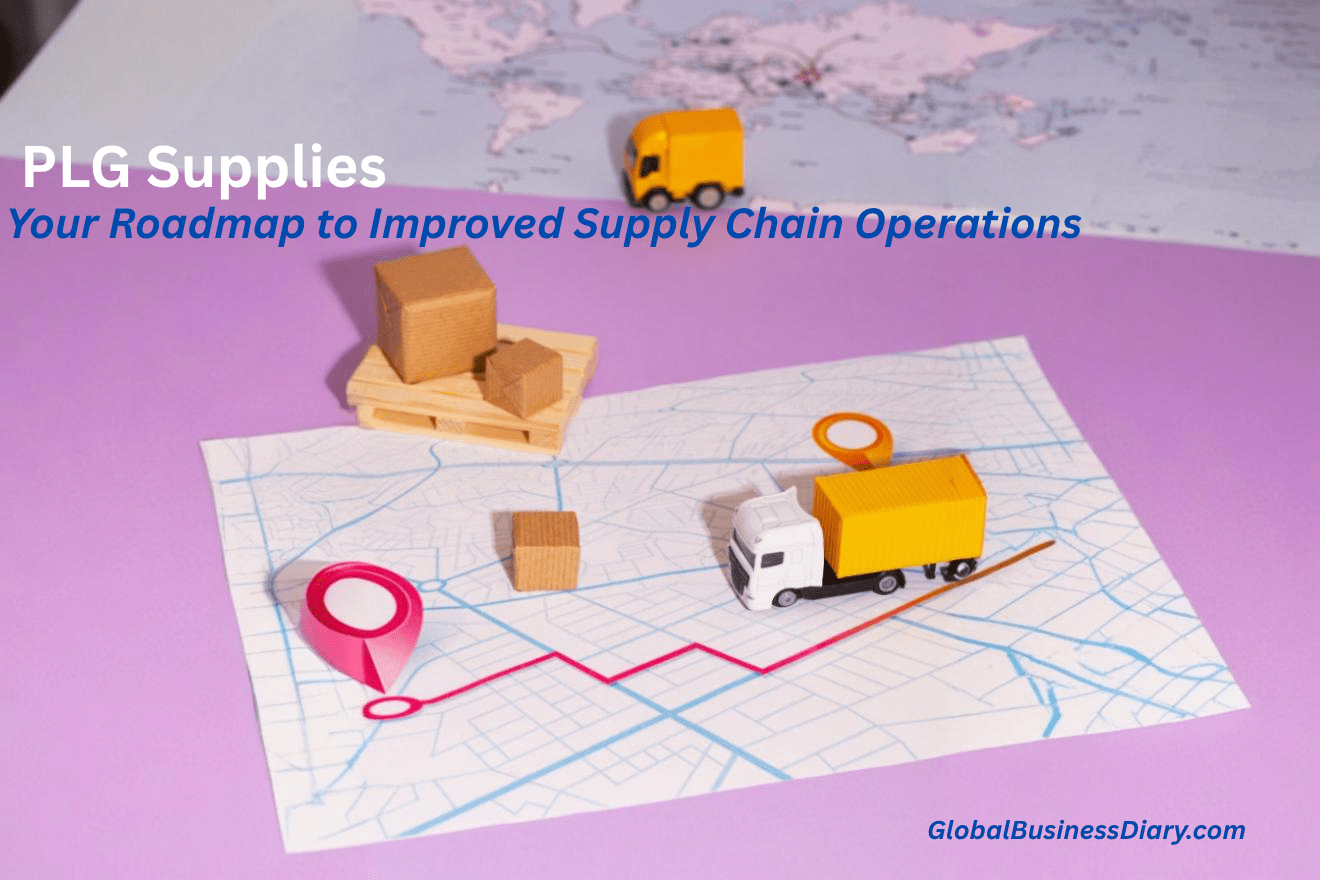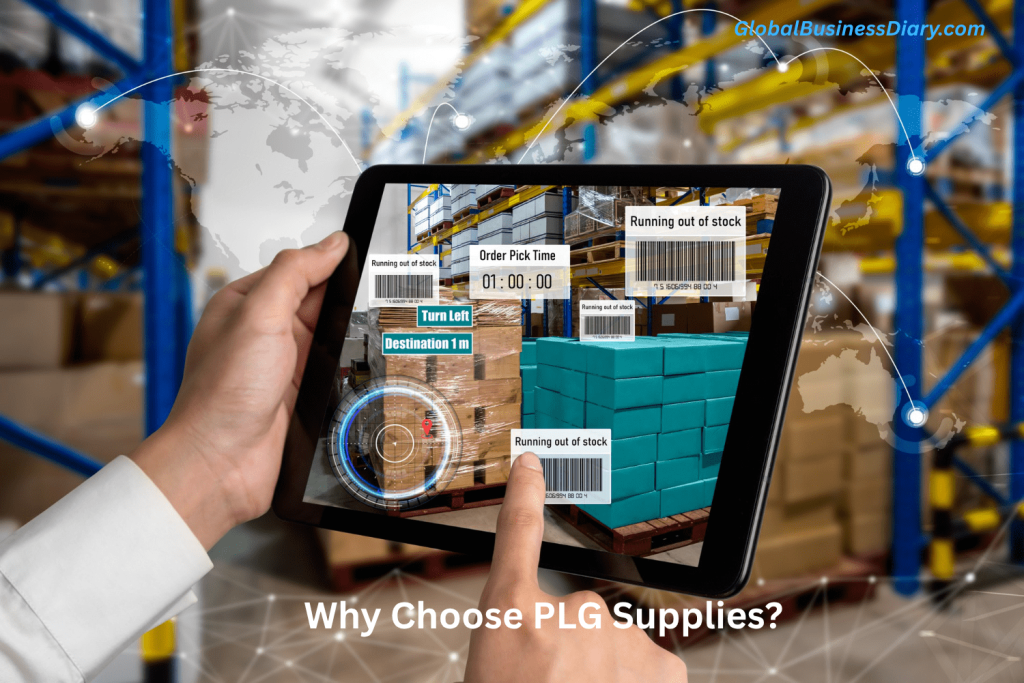PLG Supplies: Your Roadmap to Improved Supply Chain Operations

As the world is constantly changing, it is becoming more important to efficiently transport products to your customers. However, it is easier said than done. This is because it is hard to find a quality logistics partner. But things will be different if you reach out to PLG Supplies.
In general, it is complex to move goods from one place to another. This is true for both industrial equipment and everyday essentials. However, if you take the services of PLG Supplies, you will be able to manage your supply chain operations effectively. This will benefit whether you have a big or a small business.
Therefore, read on to get a better idea of what PLG Supplies does in logistics. Apart from that, you will also get a roadmap if you want to manage your supply chain effectively.
Supply-Chain Operations: A Basic Overview
Modern businesses literally stand upon the efficiency of supply-chain operations. In fact, it is the journey that starts from the time when a product is manufactured. It ends when the product reaches the final customer. The following are the major stages of the supply chain process:
- Sourcing raw materials
- Manufacturing goods
- Storing items in warehouses
- Shipping and delivery
Basically, with the help of a smooth supply chain, you will be able to keep your shelves stocked. Also, it will ensure your customers are happy.
PLG Supplies: What Do They Offer?

If you want to know more about supply chain operations, it is better to know what PLG Supplies is all about. Primarily, PLG (Product-Led-Growth) Supplies deals with a wide range of materials, tools, and equipment. This way, they help businesses grow through strong product offerings. Hence, businesses do not merely depend on sales tactics.
PLG Supplies delivers the following services:
- Industrial machinery
- Safety equipment (like fire extinguishers, protective gear, etc.)
- Fasteners and basic materials (like nails and screws)
- Tools and construction supplies
- Plumbing and electrical components
- Health and hygiene products
How to Build a PLG Supplies? – Essential Steps
If you want to work with PLG supplies for your supply chain operations, it is better to take the gentle approach. This way, you will be able to follow a step-by-step process through supply-chain strategies. This way, you will also cut off the jargon and confusion.
Basically, with this approach, you will be able to feel more confident in all stages. This will help you whether you are ordering office supplies or building a new warehouse.
The following are the steps to make your supply chain operations more effective:
1. Assess Your Business Requirements
First, you have to start with some simple questions, like
- What products do you regularly require?
- How many times do you run low on essentials?
- What are the safety or quality standards you have to meet?
In this case, you must start by listing your recurring supplies. Then, categorize them on the basis of monthly, seasonal, and one-off emergencies.
2. Start Sourcing Quality Suppliers
If you want to work with trusted suppliers like PLG Supplies, you get instant results for your business. This is because they come with reliable products. This reduces the risk of breakdowns or safety issues.
Apart from that, they consistently deliver on time. This helps you to keep your operations predictable. In addition to that, they maintain transparent communication. Thereby, you always know when an order is coming.
3. Work on Streamlining Your Inventory Management
In this case, you must not overcomplicate your inventory. Rather, you must do the following simple things:
- Always maintain a spreadsheet for all transactions. Also, you might work with easy inventory apps.
- Make sure to set reminders for reordering based on usage.
- Always store items in logical groups. Moreover, make sure to properly label them.
This way, you will benefit from many advantages. You will have reduced waste and fewer emergencies. Meanwhile, you will be able to keep your costs low.
Also read: Inventory Reserve: What Is It, How It Works, Purpose, and Usage
4. Always Organize Storage and Handling
Obviously, it matters where and how you store supplies. Hence, make sure to assign space for frequently used items close to work areas. In addition to that, always keep safety equipment (like fire extinguishers) easily accessible.
Moreover, you must also rotate stock. Hence, you will always end up using older supplies first (first-in, first-out).
5. Make Sure to Plan Your Deliveries Beforehand
If you want to be efficient with your deliveries, you must be particular about your timing and flexibility. Hence, do the following:
- Always schedule regular deliveries for recurring demands.
- Make sure to allow extra lead time for unique or custom items.
- Always communicate with suppliers if you want to update your requirements fast. This happens when you face big orders or surprise repairs.
6. Continuously Monitor and Review Your System
Primarily, supply chains are always evolving. Hence, you must take the necessary steps to keep up. For instance, you must track your most-used items to find out trends. Apart from that, you must also regularly review supplier performance.
In this case, ask these questions:
- Are deliveries on time?
- Are products up to standard?
Moreover, always adjust your order sizes and schedules. This will help you as your business grows or seasons change.
Why Choose PLG Supplies? – Major Reasons

The following are some of the major reasons why PLG Supplies is a smart choice for your supply chain:
| Strength | Explanation |
| Wide Product Range | You will get everything necessary under one roof. This way, you will end up saving time. |
| Quality Focus | You will get durable and safety-tested goods. This will reduce your headaches later. |
| Flexible Supply | PLG Supplies come with scalable solutions. Hence, they deal with both small and bulk orders. |
| Clear Communication | You will receive transparent updates from order to delivery. |
| After-Sales Support | This means they will help you always if something goes wrong. |
Hence, with this reliability, you will have peace of mind. Thereby, you will be able to focus on your business. This is because your supply-chain worries are over.
Major Challenges in Supply-Chain Operations: How to Deal with Them?
The following are some of the major challenges that you might face in supply chain operations from time to time:
1. Delays and Shortages
In general, delays and shortages are common in the supply chain. It might happen due to a variety of reasons. Hence, you must work with suppliers who provide reliable and timely deliveries. Also, make sure to maintain some safety stock for critical items.
2. Overstock or Waste
If you do not want to end up with overstock or waste, you must regularly update your inventory list. Basically, order only what your business actually requires. Also, order it when the demand is high.
3. Supplier Miscommunication
Always communicate in simple and clear language. Moreover, confirm orders and delivery times in writing. In this case, you must utilize email and order systems.
4. Quality Issues
You might face quality issues from time to time. Hence, it is better to choose suppliers with strong reputations. Also, make sure they have transparent quality controls.
Frequently Asked Questions (FAQs): PLG Supplies
The following are some of the most common questions you will find about PLG Supplies:
The upfront costs depend on what your requirements are for your supply chain. Meanwhile, PLG Supplies also helps to scale your options with time. This means you will have to pay simply for what you want. Basically, there are no massive buy-ins required.
If you want to update your orders and services, you have to keep your orders flexible. Also, you must maintain fast communication channels.
Absolutely not! If you want to manage your supplies, you will be able to do it with simple spreadsheets. However, you might also work with basic apps. This way, you will be able to track usage effectively for your business.
Read Also:













